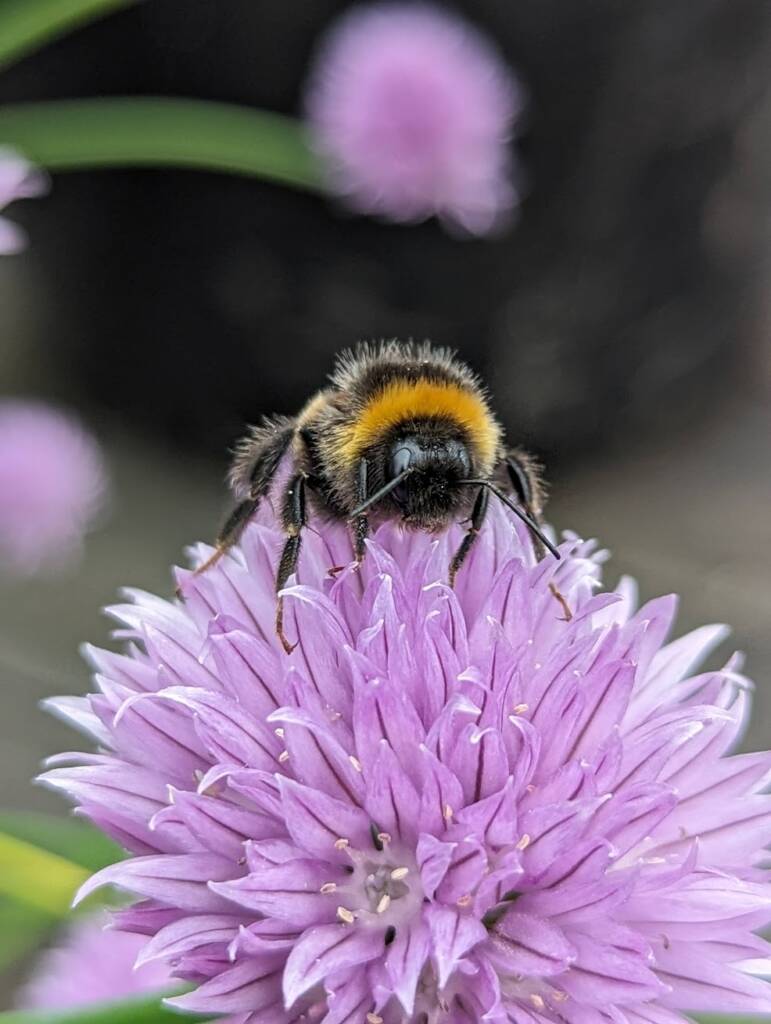IAP-25-075
The cognitive ecology of wild bumblebees
Bumblebees are essential wild pollinators in ecosystems. Understanding their cognitive abilities is therefore key to understanding pollination dynamics. Yet the majority of cognitive studies of bees have focused on just two bumblebees species, usually sourced from commercial suppliers and we know little of the cognitive ecology of wild bumblebees. In this project, we will investigate the cognitive abilities of multiple UK bumblebee species, their evolution and their influence on pollination ecology.
We will focus on three bumblebee species: Bombus hortorum, Bombus pascuorum and Bombus terrestris that vary in clade, colony size and tongue length. We will first assess cognition in wild bees of these species (Aim 1), by developing field tests of memory, behavioural flexibility and flower constancy and apply them to wild bees in the field. We will also run lab experiments investigating how bees handle 3-D printed flowers of different morphologies, testing if differences in tongue length or motor flexibility influence pollination behaviour. We will then investigate the natural flower visitation patterns of different species (Aim 2) and interpret this based on our cognitive experiments- testing for example if poorer behavioural flexibility or memory explains the range of flower choices different species make. Finally, we will also characterize the brains of the different species to test patterns of brain evolution (Aim 3) and the link between cognition and pollination behaviour.
This project will thus combine pollination ecology with studies of cognition and brain morphology to provide key data about wild bumblebees, their patterns of evolution and potential conservation strategies for long-tongued bees that have been in decline due to climate change.

Click on an image to expand
Image Captions
Bumblebee on a mauve flower. (c) Vivek Nityananda
Methodology
Field work will be run over three field seasons in parks around Newcastle. Prior to the first field seasons, field tests of cognition will be developed based on well-established laboratory tests. These tests will be used to assess bee cognition (Aim 1) during the field season. Working memory will be assessed by testing bees on learnt flowers after varying durations of time. Behavioural flexibility will be assessed using reversal learning paradigms where learnt associations between colours and reward will be reversed and we will measure how long bees of different species take to learn the new contingencies. Flower constancy will be tested by presenting bees multiple flowers and noting the sequence order of the flower visitations. Motor flexibility will be measured in lab experiments by presenting the bees with 3D printed flowers that differ in corolla length and/or colour and assessing how they handle and visit these flowers. Their performance will be assessed using AI-based pose-tracking software. We will then use field observations to measure how bees visit flowers in nature (Aim 2) measuring how often they switch between flowers within and across species. This will tell us how flower constant bees are in the field and how their switches relate to our estimate of working memory. Finally, the brains of bees used in our cognitive experiments will be analyzed using brain immunostaining and imaging in the second supervisor’s lab. This will allows to assess the brain regions that correlate with cognitive performance and trace patterns of brain evolution (Aim 3)
Project Timeline
Year 1
Month 1-6: Literature review, introduction to insect care and construction of field tests. Month 7-9: Field tests of cognition, laboratory tests of flower handling. Month 9-12: Brain imaging and analysis, Attending a national/European conference.
Year 2
Month 1-6: Statistical and video analysis, refining tests. Month 7-9: Field tests of cognition, field observations of pollination behaviour. Month 9-12: Brain imaging and analysis.
Year 3
Month 1-6: Statistical and video analysis, paper writing. Month 7-9: Field tests of cognition, field observations of pollination behaviour. Month 9-12: Brain imaging and analysis, Attending a training course and an international conference
Year 3.5
Month 1-6: Thesis write-up
Training
& Skills
The supervisory team is interdisciplinary and have successfully collaborated before. They can thus train students from different disciplines (ecology/behaviour/neuroscience) and the student will be trained in a suite of experimental and field skills and areas including: 1) Behavioural and sensory ecology 2) Machine-learning based video analysis 3) Brain immunostaining and image analysis 4) Insect care and maintenance 5) Data processing and statistical analysis 6) Scientific writing 7) Presentation skills through conferences, lab meetings, and public outreach
References & further reading
Robert, T., Tarapata, K., & Nityananda, V. (2024). Learning modifies attention during bumblebee visual search. Behavioral Ecology and Sociobiology, 78(2), 22.
Miller-Struttmann, N. E., Geib, J. C., Franklin, J. D., Kevan, P. G., Holdo, R. M., Ebert-May, D., … & Galen, C. (2015). Functional mismatch in a bumble bee pollination mutualism under climate change. Science, 349(6255), 1541-1544.
Pull, C. D., Petkova, I., Watrobska, C., Pasquier, G., Fernandez, M. P., & Leadbeater, E. (2022). Ecology dictates the value of memory for foraging bees. Current Biology, 32(19), 4279-4285.
Gomez Ramirez, W. C. G., Thomas, N. K., Muktar, I. J., & Riabinina, O. (2023). The neuroecology of olfaction in bees. Current Opinion in Insect Science, 56, 101018.
Pasquier, G., Pull, C. D., Ott, S. R., & Leadbeater, E. (2025). A neural correlate of learning fails to predict foraging efficiency in the bumble bee Bombus terrestris. Animal Behaviour, 219, 123012.

